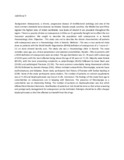| dc.contributor.author | Oyoo, GO | |
| dc.contributor.author | Genga, EK | |
| dc.contributor.author | Ilovi, CS | |
| dc.contributor.author | Otieno, FO | |
| dc.contributor.author | Otieno, CF | |
| dc.date.accessioned | 2015-10-29T09:45:03Z | |
| dc.date.available | 2015-10-29T09:45:03Z | |
| dc.date.issued | 2015-06 | |
| dc.identifier.citation | Oyoo, GO., Genga, EK., Ilovi, CS., Otieno, FO and Otieno, C (2015). Clinical profiles of patients with osteoporosis in Nairobi. Afr J Rheumatol 2015; 3(2): 17 | en_US |
| dc.identifier.uri | http://www.aflar.net/images/stories/documents/AJR_3_2015_june.pdf | |
| dc.identifier.uri | http://hdl.handle.net/11295/92138 | |
| dc.description.abstract | Background:
Osteoporosis, a chronic,
progressive disease of multifactorial
aetiology and one of the most common
metabolic bone diseases worldwide.
Despite ample sunshine, the Middle East
and Africa register the highest rates of
rickets worldwide. Low levels of vitamin
D are prevalent throughout the region.
There is a paucity of data on osteoporosis
in Africa as it’s generally thought not to
affect the non Caucasian population. We
sought to describe the population with
osteoporosis in a Nairobi rheumatology
clinic.
Objective
: This study sets out to describe
the clinical characteristics of patients with
osteoporosis seen at a rheumatology clinic
in Nairobi.
Methods
: This was a cross-sectional
study done on patients with the World
Health Organization (WHO) definition of
osteoporosis of a
T-score
of –2.5 on bone
mineral density scan. The study site was
a rheumatology clinic in Nairobi. The
study variables were age, sex, clinical
presentation and selected comorbidities.
Results
: Fifty six patients with a WHO
definition of osteoporosis were recruited.
The age distribution was 31- 95 years
with a mean age of 63.95 years with the
most affected being above the age of 60
years at 71.5%. Majority were female
(89.3%), with the main presenting
complaints as polyarthralgia (30.4%)
followed by lower back pain (19.6%)
and pathological fractures (12.5%).
The most common comorbidity being
rheumatoid arthritis (39.3%) followed by
steroids therapy (25%). Others included
osteoarthritis, fibromyalgia, systemic
lupus erythromatosus and diabetes. Seven
study participants had history of fracture
with lumbar leading at 42.8%. None of
the study participants were smokers. The
number of patients on calcium supplements
was at 71.4% and bisphosphonates was
low at 21.4%.
Conclusion:
The findings of this study
from age to comorbidities on osteoporosis
are in keeping with literature. The
presence of fibromyalgia as a comorbidity
was an interesting finding. The number
of patients on bisphosphonates was low
which differed from Western literature.
Stratification of patients at risk should be
done so that active screening and prompt
early management for osteoporosis can
be instituted. Attempts should be to offer
cheaper bisphosphonates so that the
affected can benefit from the drugs | en_US |
| dc.language.iso | en | en_US |
| dc.publisher | University of Nairobi | en_US |
| dc.subject | O steoporosis, Clinical profile, Nairobi | en_US |
| dc.title | Clinical profiles of patients with osteoporosis in Nairobi | en_US |
| dc.type | Article | en_US |
| dc.type.material | en | en_US |

